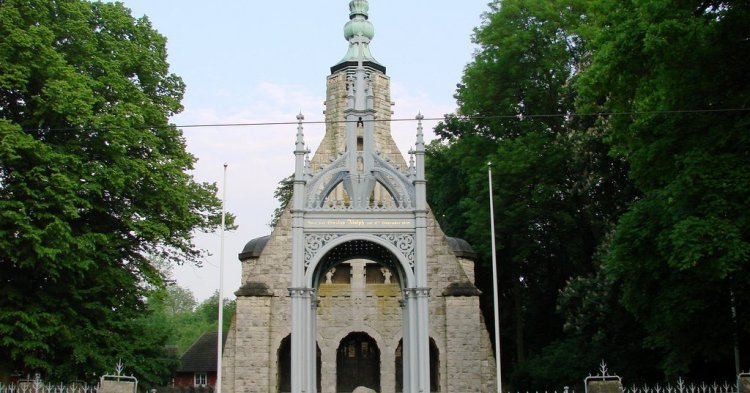The Prague defenestration on the 23rd of March 1618 and the resulting rebellion of Bohemian Protestants against their Catholic territorial lords triggered one of the largest catastrophes ever in European history. In the Holy Roman Empire alone a third of the entire population – around 6 million people – were killed by war, hunger and plagues. Both World Wars have pushed the collective trauma caused by the Thirty Years’ War to the background. The Thirty Years’ War, however, remains an important guide for current questions and issues in Europe.
After thirty years of war, suffering and misery, a new way of thinking and a revolutionary peace treaty emerge
The Thirty Years’ War is often simplistically represented as a religiously inspired conflict. This, however, reduces the complex contexts of the conflict to only one of its causes. In actual fact it was not only a result of divergent positions within the Christian denominations. It was about supremacy in the Holy Roman Empire. Independence. Economic interests. Sovereignty. Identities. During the war, divided by historians in four phases, a multitude of actors fought, including states like France, Denmark, Austria and Sweden. In the end, not only Central Europe lay in ruins – today’s Southern Germany was especially devastated – plagues, hunger and plundering mercenaries claimed many more lives. The independence of the Netherlands and Switzerland, as well as of the small states and the great power of the respective territorial princes in today’s Germany were thereby settled.
After three decades, the Westphalian peace treaties put an end to the ongoing armed clashes. At the same time they created, in the words of the former German Federal President Roman Herzog, “the foundations for future Europe”. For the first time, there was diplomatic cooperation between almost all European states in the negotiations. The new peace treaty that emerged from these negotiations formally established for the first time principles i.e. conceptions of international law such as respect for sovereignty and the territorial state, as well as determining when war is lawful. In the case of Germany, it created the basis for the federalist organisational principle, which also plays a major role within today’s European Union.
It was the experience of the Thirty Years’ War that decisively influenced the thought of philosophers such as Grotius, Descartes, and Hobbes. The current of Enlightenment thinking, which they co-founded, was not only to mould Europe in the following period, but also found a strong echo in other parts of the world. To end the war, it was above all crucial to persuade the key players to realise that: “Only an order in which everyone was incorporated could protect the continent permanently from similar catastrophes” (Roman Herzog). This was a realisation that was also pivotal for the increasing European integration process after the Second World War.
Europe in peace – a continent of milk and honey? Not at all!
While the 300th anniversary of the outbreak of the Thirty Years War was lost to the turmoil of the First World War, over the course of the last century fundamental changes have taken place. With the great exception of the Yugoslav Wars, since 1945 there have been no major inter-state conflicts on the European continent. For more and more generations, the idea of war and destruction in Europe appears distant and unrealistic. Moreover, the advancing process of unification and integration has helped to consolidate a new, sustainable model of peaceful coexistence. Another central realisation that led to the signing of the Westphalian peace treaties has thus become a political reality: “Pax optima rerum” - peace is the greatest good.
One can therefore claim that Europe has learned its lesson. Disasters like the Thirty Years’ War are from today’s perspective completely unimaginable. Nevertheless, current political developments prompt us to rethink these arguments. According to the renowned Stockholm International Peace Research Institute (SIPRI), the number of armed conflicts and wars worldwide has been currently increasing again since the end of the Cold War. Europe has a great responsibility here not only for historical reasons. Controversial arms exports to crisis-stricken regions currently contribute not only to continuous armed conflicts, but they also make the war business highly lucrative for European companies. However, beyond the military interference in war zones like Afghanistan – especially in view of European history - an active and, above all, effective peace policy would be desirable. And not only on a national level, but within the framework of the common foreign and security policy even above the European Union. Conceived primarily in the beginning as a major peace project, experiences such as the Thirty Years’ War teach us to remind ourselves of these origins of European integration.


1. On 8 January 2022 at 23:10, by Stevie Devine Replying to: 400 years after the outbreak of the Thirty Years’ War: a disaster with a clear message for today’s Europe
Replying to: 400 years after the outbreak of the Thirty Years’ War: a disaster with a clear message for today’s Europe
And maybe the thirty years war didn’t end with the Treaty of Westphalia but rather with the signing of The Good Friday Agreement which settled the question between the Protestants and Catholics in Ireland and was the end of the Religious wars of the 1640,s in this outpost of Europe .
Follow the comments: |
|
